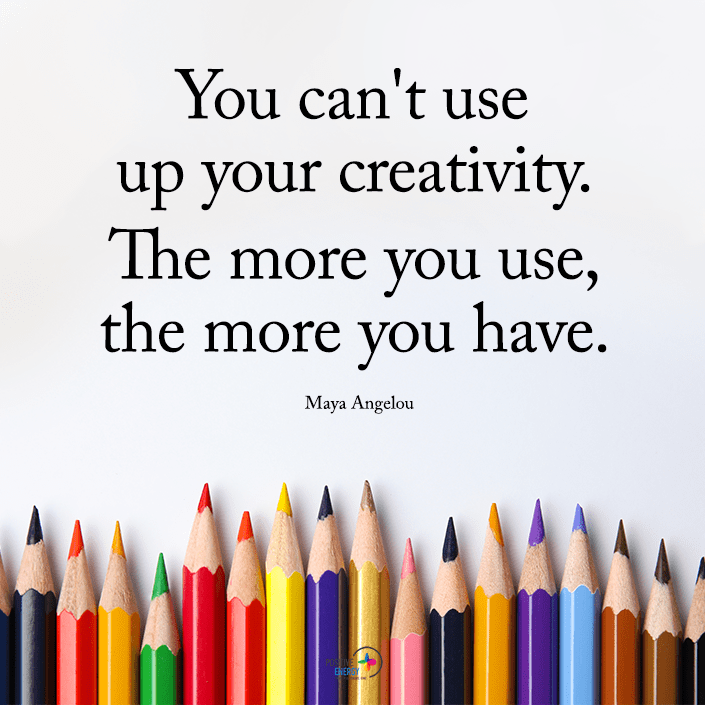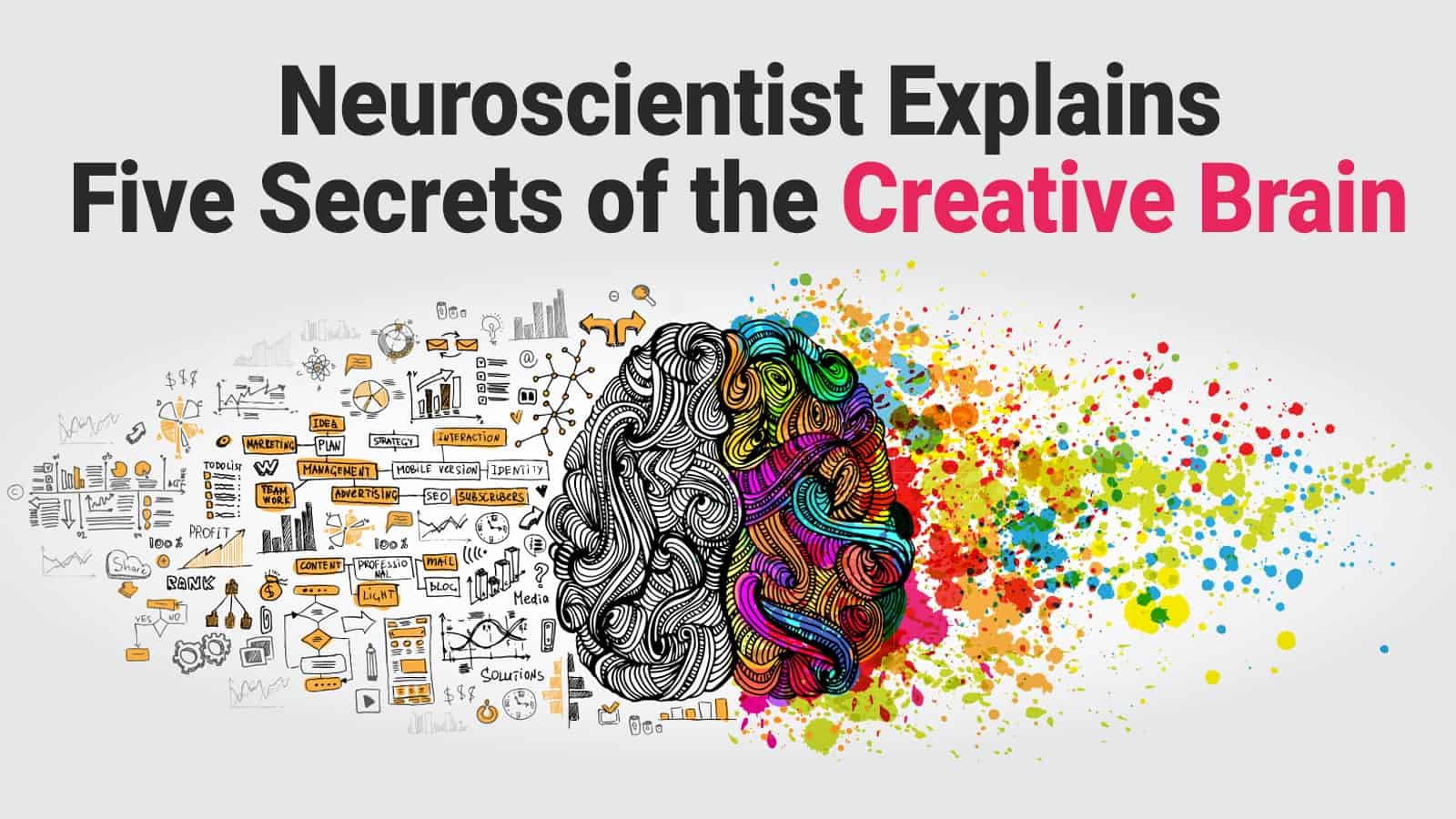Creative skills are unique in advancing society’s essential and joyful facets. Without the ability to conceptualize ideas and create something unique, there would be nothing of value. Think about this: nearly everything we take for granted began with the spark of creativity – roads, phones, computers, video games, food, books, paintings, electricity…and so on.
All great inventors, writers, painters, composers and designers possess incredible creative talent. Strangely enough, our children are increasingly preparing themselves for a lifetime of work that doesn’t fall within the creative realm. Outside of the traditional art and writing classes one takes in a course of study, there’s just not much else. To this end, we should encourage our children to pursue something that will enhance their creativity.
Whether or not you consider yourself to be creative, there are some great ways you can enhance this skill. From creating a PowerPoint presentation to constructing the next Pulitzer Prize winning novel, following these ten tips will ensure that you’re at your creative best.
10 Things Creative People Do Without Even Realizing It
“Logic will get you from ‘A’ to ‘B’. Imagination will take you everywhere.” – Albert Einstein
1 – Keep an open mind
This is number one for a reason – creative discoveries happen when the mind is relaxed and open. While logic and analysis demand intense concentration and staying power, creative thinking cannot be forced using these ways of thinking.
An open mind is a foundation for innovation and creative insight. This is very simple: keeping your mind open means keeping your options available. The more attuned you are to the options at your disposal, the more you can make connections and create something of value.
2 – Listen to ambient noise
Turns out that there is a reason many of us find it easier to pluck away on our laptops in coffee shops. In a Journal of Consumer Research study, scientists used five different experiments to determine if and how noise level affects cognitive cognition. Here is a synopsis of the study:
“Compared to a relatively quiet environment (50 decibels), a moderate level of ambient noise (70 dB) enhanced subjects’ performance on the creativity tasks, while a high level of noise (85 dB) hurt it. Modest background noise, the scientists explain, creates enough of a distraction to encourage people to think more imaginatively.”
3 – Exercise regularly to stay sharp and creative
The benefits of exercise are numerous and have been meticulously documented through various studies and experiments. We can add one more thing to this list: exercise enhances creative ability.
According to a study in the journal Frontiers in Human Neuroscience, regular exercise seems to be connected with enhanced divergent (thinking of multiple solutions to a problem) and convergent (thinking of one solution to a problem) thinking – two foundational components of creative thought.
4 – Get (a little) tired
While analytical thinking is highly difficult with even a slightly sluggish mind, creative thinking seems to improve. The reason is that a tired brain struggles to ignore distractions and solve complex problems. However, this is not the goal in creative thought. The goal in creative thought is to allow our brains to wander off on tangents.
The easiest way to implement this tip is to determine your “non-optimal” times of day. For example, if you’re a night owl, you may consider conducting your creative work during the day. If you’re a rise-and-shiner, you should do most of your creative thinking at night.
5 – Make those brain connections
Consider the words of Steve Jobs:
“Creativity is just connecting thing. When you ask creative people how they did something, they feel a little guilty because they didn’t really DO it, they just saw something.”
In a slightly more scientific explanation:
“Several brain regions and the connections between them, (are the areas) most important to general intelligence.”
To implement this somewhat abstract proposal, make sure you continue in your creative endeavors. If you’re a writer, then write. If you are a painter, then paint. In doing so, your brain does not remain stagnant and will sometimes provide some excellent creative insight.

6 – Disconnect
While it is an absolute that mild forms of distraction can be good for creative thinking, it is important to understand that constant distractions, especially of the tech variety – email, cell phone, and internet – are not.
If great writers like Tolkien, Hemingway, Angelou, Dickens, or Twain were constantly distracted, would they have produced the work that they did? Maybe, but they may have also found it more difficult and time-consuming. Distractions, especially with technology use, are so commonplace that they’ve become acceptable, even in the workplace.
Consider a “digital detox” on your next creative project. Shut down the cell phone, close the web browser, and focus on your craft. You may find some creative flashes that really make a difference in the finished product.
7 – Dim the lights
Among the more interesting findings: dimming the light around your workplace can boost creativity. This can surprise us, who love plenty of natural light when doing our work.
Consider this study from the Journal of Environmental Psychology; here are a couple of the studies’ findings:
- Dim illuminations and priming darkness improve creative performance.
- Perceived freedom and a creativity-supportive processing style explain the effect.
- Light setting and the stage of the innovation process alter the effect’s emergence.
8 – Change the scenery for creative inspiration
Working at home is necessary for those who create while holding jobs or raising a family. While some of us may do absolutely fine with this arrangement, it is worth considering that an occasional change in scenery can boost our creative thinking.
The rationale is simple: our surroundings sometimes become stagnant and boring. Stagnation and boredom are not a good recipe for creative cognition while switching it up by visiting the library, coffee shop, or local parks can be just what our creative juices need.
9 – Expand your cultural and artistic knowledge
Novelty is the essence of creative thought. As such, it is necessary for those of us with creative inclination to expand our cultural reach.
This doesn’t mean that you need to book a thousand dollar flight to some far-away place (well…if you can, do it!), but expanding your knowledge through simple (read: affordable) measures – reading a book on different art forms studying a new poet, watching a movie on different cultures, and so on.
We’ve established that connections in the brain are important to creative discovery. To this end, plenty of new connections can be made by expanding upon our cultural knowledge.
10 – Embrace uncertainty and adventure
On a personal note, this author loves this quote by German writer Johann Wolfgang von Goethe: “Whatever you can do or dream you can, begin it. Boldness has genius, power and magic in it!”
As creators, we likely have a daring and adventurous aspect of our personality. In a world that encourages the nine-to-five “working for the weekend” culture, this side of us can feel distant and even foreign after a while. However, you are different!
In being someone who creates and, in doing so, chooses to share your creations with the world, you already open yourself up to some level of uncertainty. Good! Uncertainty is growth for the soul, and adventure is its soil.
Uncertainty is adventurous, and being adventurous expands upon those “connections” we discussed earlier. The bottom line? Never lose your sense of adventure – it makes life less fun and dulls your creative side.

Final Thoughts on Some of the Habits of Creative People
Of course, this list is all-encompassing. Furthermore, it may not apply to every creative thinker. Every genius has their own ways of supporting and driving even more creativity. That uniqueness makes artists and creators so fascinating to others–they’re always a surprise!


















